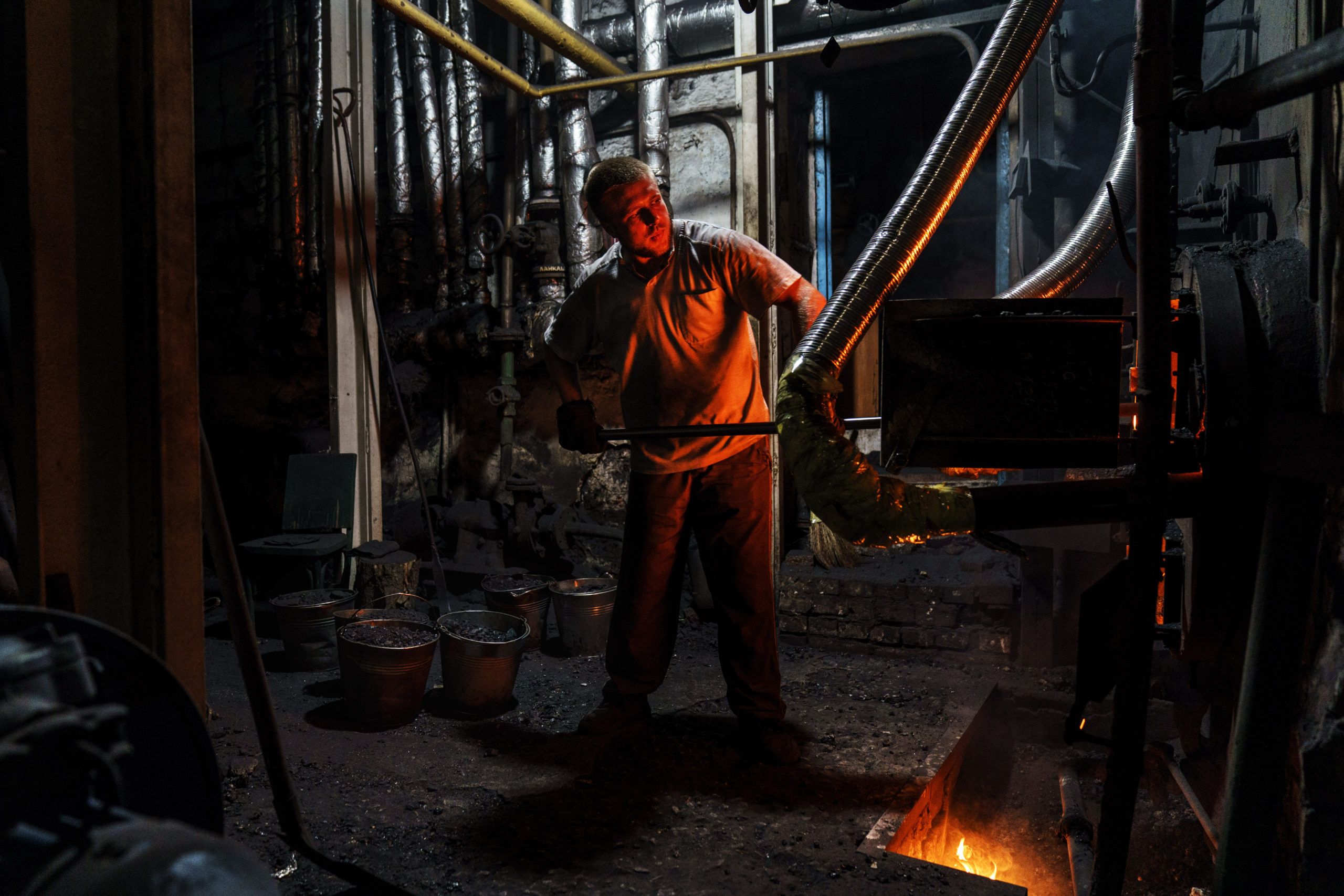KOSTIANTYNIVKA, Ukraine (AP) — Seemingly abandoned during the day, the damaged factory building in eastern Ukraine comes to life at night, when the smell of fresh bread emanates from its broken windows.
It’s one of two large-scale bakeries left in operation in the Ukrainian-held part of the Donetsk region, most of which is under Russian occupation. The others had to close because they were damaged by fighting or because their electricity and gas were cut.
The bakery in Kostiantynivka adjusted its working hours according to the rhythm of the war.
Employees at the factory come to work at 7 p.m. to start kneading the dough. By dawn, truck drivers arrive to pick up fresh loaves of bread for delivery to towns and villages where the grocery stores are typically open only in the morning, when, on most days, there is a lull in Russian shelling.
“We bake more bread at night so we can distribute it to stores in the morning,” bakery director Oleksandr Milov says.
The factory bakes about seven tons of bread daily, or about 17,500 loaves. Half of it goes to the Ukrainian military.
Olha Zhovtonozhyk, a woman in her 30s, picks up the round loaves from the conveyor belt and quickly puts them into baking forms. She takes her job very seriously.
“The Ukrainian armed forces are our heroes now, but our job is also important for the life of our country, in martial times,” Zhovtonozhyk says.
Another employee, Olena Nahorna, 48, agrees.
“We are not afraid. We bake bread, because the people, our military, our defenders, need bread,” Nahorna says with a smile, moving the dough to the oven.
Another plant in Druzhkivka is still operational, producing rolls, loaves and cookies.
But the bakeries in Kostiantynivka and Druzhkivka don’t make enough bread for the estimated 300,000 people who remain in the Ukrainian-controlled part of the Donetsk region. In the south of the region, entrepreneurs bring in bread from the neighboring Dnipropetrovsk and Zaporizhzhia regions, and some supermarkets have small bakeries.
The Kostiantynivka bakery has remained open despite many challenges. In April it lost its gas supply, but the ovens were reconfigured to run on coal — a system which hadn’t been used at this plant since World War II. The coal-fired boiler is operated by three men.
“It’s such a colossal job; the guys work 12 hours a day,” Milov says.
Milov tried six types of coal before he found the right type with a high heat output. One advantage with the coal system is that the plant won’t need additional heating in winter. There will be no central heating in the region this winter because of the lack of gas.
The bakery faced its next problem in June, when Russia occupied the town of Lyman in the north of the region where the mill that supplied flour to the Kostiantynivka bakery was located. Milov had to buy flour from a supplier in the Zaporizhzhia region, which is 150 kilometers (about 90 miles) from Kostiantynivka.
The added transportation costs increased the price of bread. So has the inflation rate, which is about 20% in Ukraine.
“People’s income has decreased, and people are just buying cheaper products at the moment,” Milov says. His bakers have even had to change the recipe of their bread to keep the price affordable as long as possible.
Another concern is a shortage of grain. In 2021, the harvest in Ukraine exceeded 100 million tons of grain. The new harvest, according to preliminary estimates of the Ministry of Agriculture Policy, is 65-67 million tons. Since Russia has attacked not only fields, but grain storages as well, some farmers are exporting grain for storage abroad.
The bakery in Kostiantynivka has 20 drivers deliver bread daily, not only to cities, but also to half-empty front-line villages.
One of them, Vasyl Moiseienko, a retiree, arrives in his car at the factory at 6 a.m. and fills it up with still hot loaves. He shows the crack in the windshield that a piece of shrapnel left a few weeks ago during a bread delivery run.
“Who else will go? I’m old, so I could drive,” Moiseienko said.
He drives along bad roads to the village of Dyliivka, 15 kilometers (nine miles) from the line of contact. The driver quickly unloads the bread and drives on to another town on the front line.
About 100 people live in Dyliivka, but the village looks empty. Every 10 to 15 minutes the sounds of artillery can be heard. It’s hard to find a cellphone connection in the area, but the data network functions. The saleswoman of the local store writes in the village’s Viber chat that bread has been brought. And within 15 minutes, the store fills up with people.
Liubov Lytvynova, 76, takes several loaves of bread. She says she dries some of it to make breadcrumbs which she keeps in her cellar. She puts one loaf in the freezer to keep it longer.
“We only live in fear. And if they don’t deliver bread, what will we do?” Lytvynova said.
___
Follow the AP’s coverage of the war at https://apnews.com/hub/russia-ukraine

